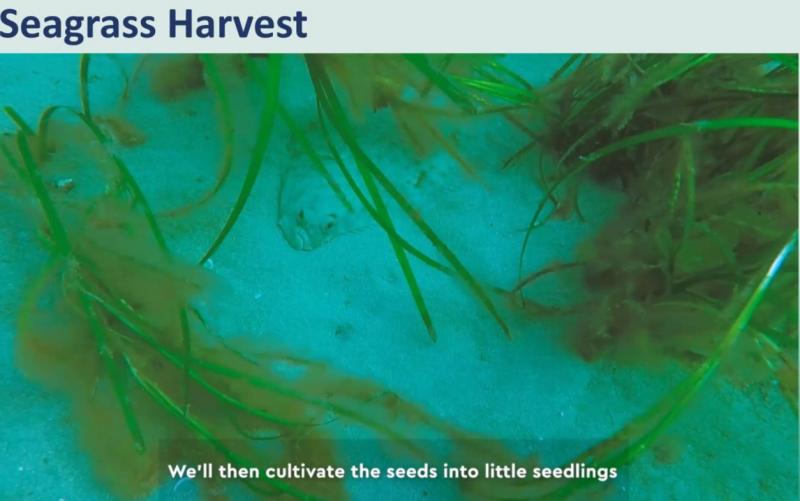
……..then plant seagrass. It's a huge environmental benefit, as Esther Farrant, Education Officer of the Ocean Conservation Trust's Remedies Project, told Coastwise members.
The project has £250K of EU funding, and is using locations like offshore at Looe, and Osborne Bay in the Isle of Wight to investigate the best ways of propogating the species.
Seagrass is important in reducing seabed erosion, and is a habitat for all sorts of animals including commercial species such as flatfish. It will only grow at water depths of under 10m due to the amount of light required.
Zostra marina as it is more scientifically know, is a true plant with rhizome roots, and is an important store of marine carbon, with a capability to sequester carbon at 35X the rate of rainforests.
The reason for the project is to investigate ways to propogate the species, and the most effective ways of collecting, growing and planting seeds out on the seabed to form the rhizomes that bind the grass to the seabed.
The project staff collect the specific strands of seagrass that contain the seeds, and allow them to rot down to release the seeds. Then pillows made of biodegradeable fabric are filled with sand and seeds which are allowed to germinate and form roots, are deposited near each other on the seabed.
The main threats to seagrass are environmental change leading to seabed turbulence, land water runoff, and recreational use, mainly anchor chains swinging with the tide. Esther outlined a couple of methods of constructing moorings so that seabed damage is avoided.
Available here as a YouTube download (note the embedded videos are adversely affected by the changes in format) …….click the link:-

